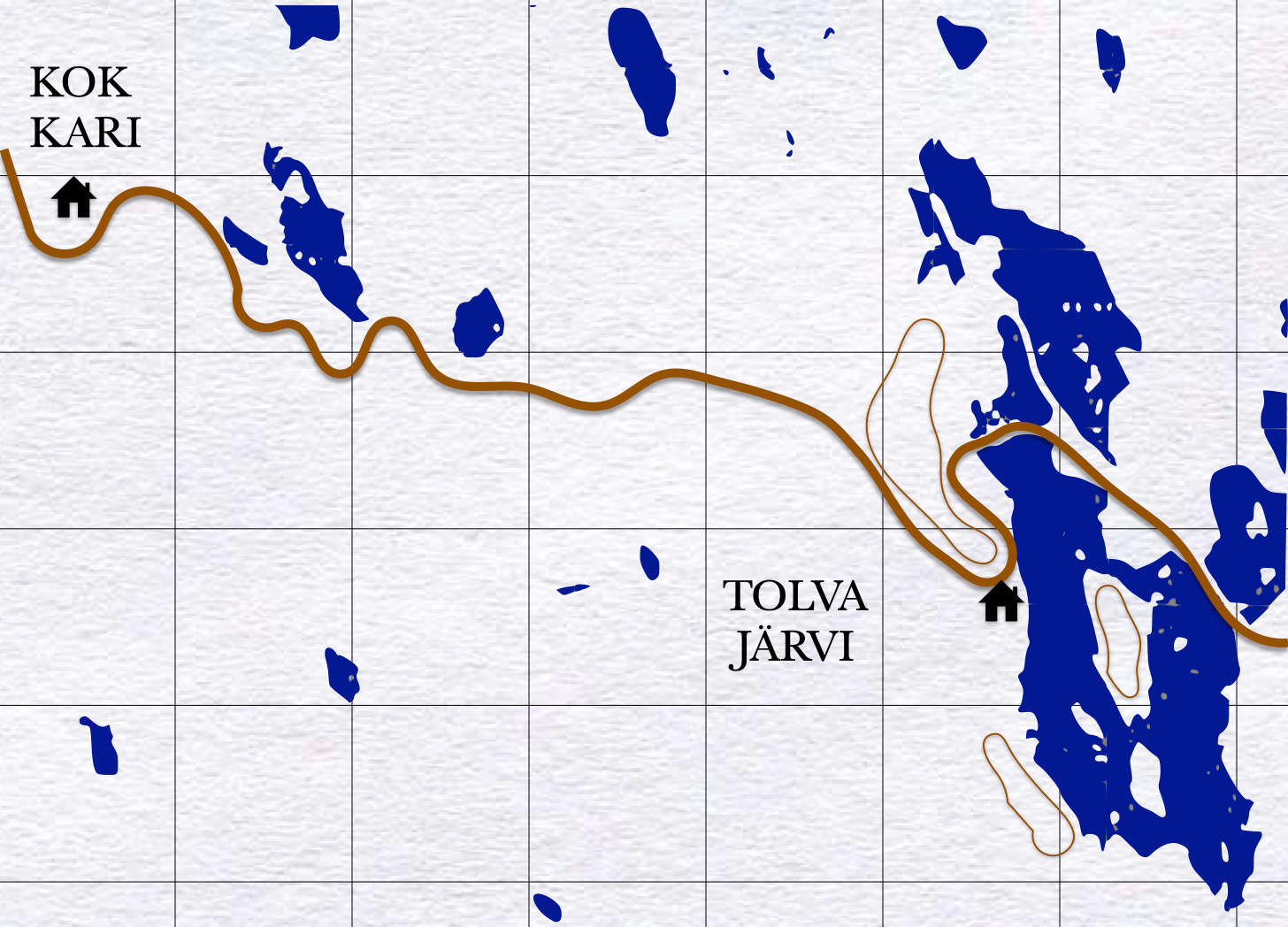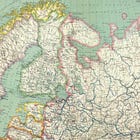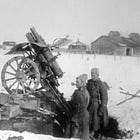
This post lays out the second problem of a multi-step decision-forcing case. Before engaging it, you will want to read the three background articles in the series and the first problem in the case. You will also find much relevant information in the article on the short three-inch guns that have just become available to the protagonist.
7 December 1939
Around midnight, you began the seventy-kilometer drive that will take you back to Värtsila, the town where your new boss (and old friend) Paavo Talvela has established his headquarters. As your driver takes you over a narrow forest-flanked road, you ponder the problems that this sort of terrain poses for the Soviet forces attempting to advance from the east. In particular, you think back to your days at the staff college in Helsinki, where you calculated the length of formations marching along roads like this one.
You think of the effect that the snow that began to fall last evening will have on such movement. (The weather report that you heard yesterday predicted that somewhere between ten and fifteen centimeters of snow would be on the ground by the time the sun came up today, a little past 0930.) You also consider the effect that the freezing of the region’s many lakes would have on both friendly forces and the Soviet invaders.
At 0300, you arrive at the headquarters of Colonel Talvela, in the town of Vartsilä. While you are both glad to see each other, you get down to business.
In true Finnish fashion, you begin with the bad news. Task Force Räsänen is in bad shape. In three days of fighting (3, 4, and 5 December 1939), it lost two battles, twenty-five of its forty-eight machine guns, and all four of its field guns. Worse, it retreated for twenty-seven kilometers. Worst of all, Lieutenant Colonel Räsänen commands from the rear.
On 3 and 4 December 1939, while forward elements of the Task Force were fighting at the Aittojoki River, Räsänen was located at Äglijärvi, some fourteen kilometers to the west. Last night, while five of his companies maintained contact with forward elements of the advancing Soviets, you found him in the village of Tolvajärvi, ten or so kilometers west of that force.
You then give Talvela the good news. The battery of four three-inch infantry guns (76 LK 13) that he sent forward to reinforce Task Force Räsänen has arrived. Better yet, the current location of the main body of Task Force Räsänen is a good place to make a stand. A ridge, which rises more than twenty meters above the level of the lake, runs along the west bank of Lake Tolva. Best of all, the east-to-west road the Soviets have been following runs for several hundred meters along a narrow causeway that crosses the middle of the lake. (The nearest alternative roads are located fifty kilometers to the north and thirty-five kilometers to the south.)
After listening to your report, Talvela asks you for your recommendation. In particular, he asks how you would employ your regiment in support of Task Force Räsänen. (The 16th Infantry Regiment, which is currently on board the trains taking it to Värtsilä, serves as the reserve of Task Force Talvela.)
What do you tell Colonel Talvela?
Please feel free to use the comments section to answer this question. In doing so, please be careful to avoid “spoiling” the problem by providing information that could not have been available to Lieutenant Colonel Pajari. Such information includes events that happened after 0300 on 7 December 1939 or details about the Soviet force marching towards Task Force Räsänen.
To Share, Subscribe, or Support:









Continue efforts to defend Tolva and halt Soviet attacks by creating a strong point in the village and the areas to the north and south IOT block any movement west. Make it clear to all personnel this is as far as the Soviets are going and that you are right here with them.
One of the mountain guns is positioned in the village to provide direct fire against tanks and other targets coming from the east. The remaining guns are behind the ridge IOT provide fire support to the force.
As the 16th Infantry Regiment arrives, one battalion and the regimental mortar battery will reinforce the blocking positions in and around Tolva Village, Hirva Village and to the south, while the other battalions form additional patrols to attack Soviet forces as previously described (defeat Soviet flanking efforts and conduct ambushes and raids against Soviet units, particularly logistics elements, in column along the roads).
The engineers will assist with defensive efforts in Tolva by mining the road and the causeway, which hopefully we have, and constructing obstacles with priority going to Tolva. Once that is done, the engineers will join the reserve force, with the same planning priorities as before.
If no anti-tank units are available, or even if they are, improvise them with demolition charges, Molotov cocktails (an eternal joke on old Vyacheslav), grenades and anything else available. Machine gun units position 25% of their weapons as anti-aircraft support as actual anti-aircraft units might not arrive in time (but request them anyway). Find or fabricate skis for patrols, raiding and resupply parties.
The Regimental HQ and logistics units will position themselves in and around Tolva Village to provide support and resupply.
As soon as possible, resupply any units operating to the east. Once the lakes freeze solid, things get more complicated, but as the snow deepens, wheeled vehicles and dismounted infantry will be road bound, whereas ski troops will not.
I have no idea about what happened after 03:00 on 7th Dec (but now I'm curious). That said, this seems like a reasonable situation, no?
From the map, the distance from the ridge to the easter side of the lake is 2km (maybe a bit more on the north side). That should be easy work then for all guns. So:
- emplace guns on the ridge
- prepare some demolition on the lake in case it becomes frozen enough for the soviets to attempt to cross it on foot
- enjoy the shooting?
I must be missing something - maybe the ridge is too close, and thus too much exposed to counter-battery fire?